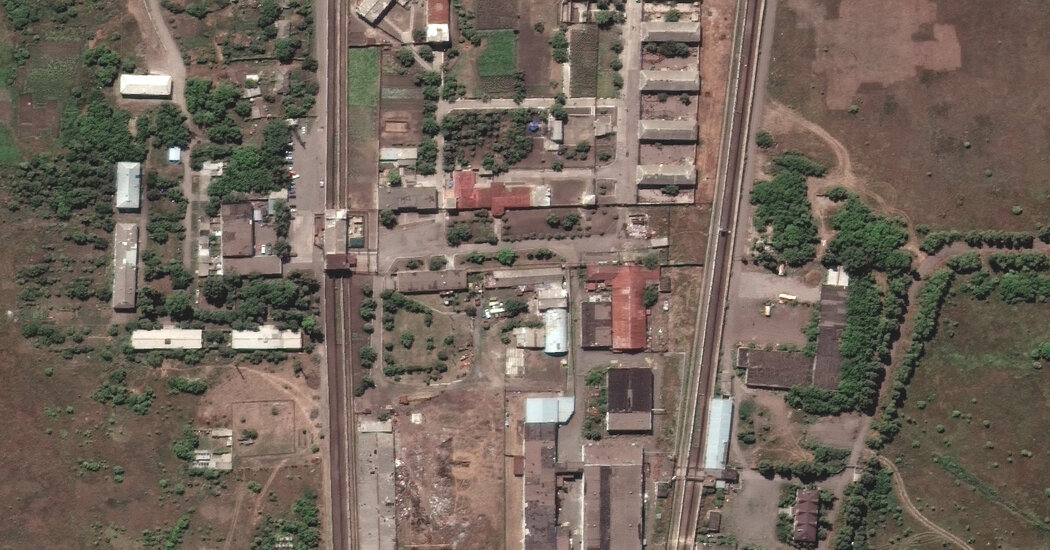Paywall. Anyway, its common sense that prisons are needed to hold prisoners of war. But of course US media has to spin it as something evil, as usual.
Thanks for noticing, I’ve just added copypaste
Attacking sovereign country without any reason and creating detention centers in occupied territory is evil.
You think life is like a hollywood movie where good fights against evil? And also, the good guys are the ones who genocided their own citizens for the last 8 years?
Credible source or didn’t happen.
Here is a source. You might not consider it credible, but it happened anyway.
New imperial propaganda just dropped.
Seriously though, this is the same lines from the same playbook. I’ll believe it when I see evidence and not just some imperial intelligence wonks telling us what we should see on a Google earth image.
Removed by mod
“[…] that’s not [only] propaganda, that’s [atrocity propaganda]. [The US tries] to impose their imperialistic agenda as always, but hey – looks like they aren’t empire anymore :)”
fixed your comment
Ethnonationalist propaganda? On my Lemmy?
deleted by creator
Removed by mod
deleted by creator
Removed by mod
Did you believe the pictures of WMDs in Iraq too?
deleted by creator
whatabout… ;)
deleted by creator
Copypaste:
The U.S. State Department and Yale identify 21 detention sites in Russian-controlled territory.
Image
A satellite image showed a general view of a prison in Olenivka, Ukraine, in July. Researchers said they found evidence of disturbed earth there consistent with mass graves.Credit…Maxar Technologies/Via Reuters
WASHINGTON — The U.S. State Department and Yale University researchers said Thursday that they had identified at least 21 sites in the Donetsk region of eastern Ukraine that the Russian military or Russian-backed Ukrainian separatists are using to detain, interrogate or deport civilians and prisoners of war in ways that violate international humanitarian law. There were signs pointing to possible mass graves in some areas, they said.
Researchers at the Yale School of Public Health’s Humanitarian Research Lab said the sites were part of a “filtration system” used for processing detainees and prisoners. They reached their conclusions after examining commercial satellite imagery and open-source information. The detainees and prisoners could be forced to live outside the centers in Russian-occupied areas of Ukraine, imprisoned for long periods, deported to Russia or even killed.
The research was a collaboration between Yale and the Conflict Observatory program that the State Department set up in May to document war crimes and other atrocities committed by Russian or Russian-backed forces in the Ukraine war. The researchers released their findings through a report from Conflict Observatory.
“We again call on Russia to immediately halt its filtration operations and forced deportations and to provide outside independent observers access to identified facilities and forced deportation relocation areas within Russia-controlled areas of Ukraine and inside Russia itself,” the State Department said in a statement referring to the new findings.
The report identified four types of centers in the filtration system: registration, holding, secondary interrogation and detention.
The researchers also found evidence of disturbed earth on two recent occasions at the Volnovakha “correctional colony” near the village of Olenivka that they said was consistent with mass graves. The appearance of disturbed earth predated an explosion on July 29 at the prison compound that killed 53 Ukrainian prisoners of war.
One area of disturbed earth appeared in imagery from April 11 — “contemporaneous with an open source account of alleged gravedigging,” the report said, referring to an online account in which a former inmate discussed a cellmate working a shift digging graves. A second area of disturbed earth appeared on July 27, two days before the explosion.
A New York Times analysis from early August of images from Maxar Technologies and Planet Labs, two satellite imaging companies, concluded that some time after July 18 and before July 21, about 15 to 20 spots of notable changes to the ground appeared on the southern side of the complex. They were about 6 to 7 feet wide and 10 to 16 feet long at first, and some later appeared to have been lengthened to merge. It was unclear whether they were grave sites.
The Conflict Observatory report said the Volnovakha center was being used as a long-term detention center for civilians being kept under the auspices of “administrative detention” and for holding prisoners of war, particularly Ukrainians who surrendered after the siege of Azovstal, in the coastal city of Mariupol. “Filtration” activities appear to have begun there in late March and have continued since then.
The researchers noted that there had been reports of torture, beatings, lack of water and proper nutrition, unhygienic conditions and overcrowded cells at the compound.
The State Department said it was giving an additional $9 million to the Conflict Observatory through the European Democratic Resilience Initiative.
“This focus on accountability lays the foundation for future civil and criminal legal processes, whether in Ukraine, through international mechanisms, or in third-party countries that have established jurisdiction,” it said.
“President Putin and his government will not be able to engage in these persistent abuses with impunity,” the department added. “Accountability is imperative, and the United States and our partners will not be silent.”
In June, the U.S. National Intelligence Council released an unclassified report that said it had identified 18 possible locations in Russian-occupied eastern Ukraine and western Russia where detainees and prisoners were being held and processed.
— Edward Wong
They reached their conclusions after examining commercial satellite imagery
ZENZ ZENZ ZENZ ZENZ





